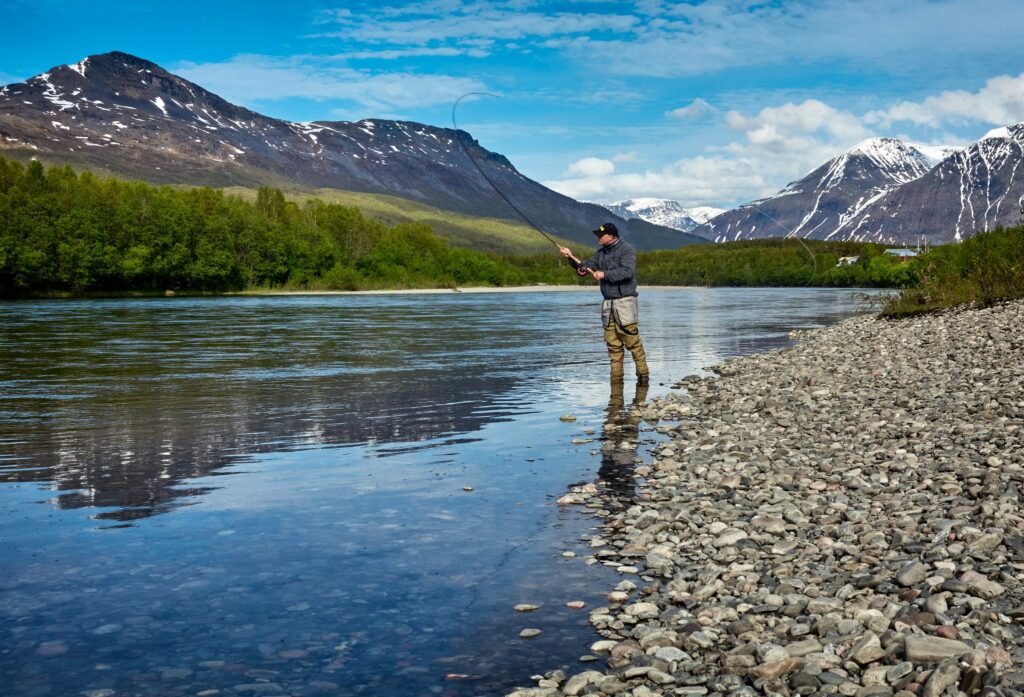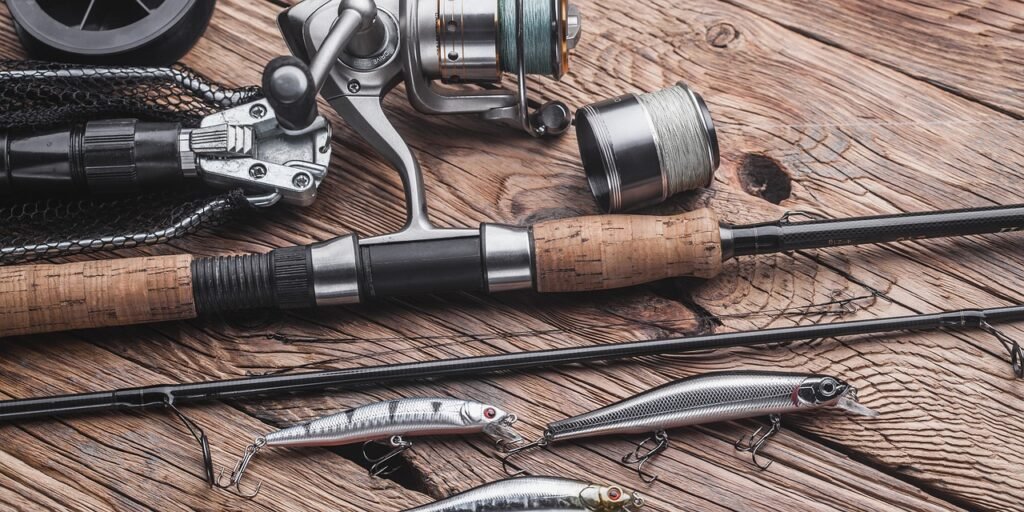Fly fishing is an artful, immersive experience that connects anglers with the pulse of rivers and streams, offering both solace and excitement. Whether you’re drawn to the elegance of the cast or the thrill of the catch, stepping into fly fishing creates a vibrant intersection of skill, gear, and nature. This blog post aims to be your guide, outlining the key components you’ll need to begin your fly fishing adventures, whether you’re a beginner angler or an outdoor enthusiast looking to switch up your fishing routine.
Understanding Fly Fishing Gear
Fly fishing is a fascinating and distinct form of traditional fishing that demands a specialized set of gear. This gear is meticulously designed to replicate the effortless glide and hover of insects over the surface of the water, which are the preferred meals of the fish you aim to catch. To embark on this captivating journey, it’s essential to familiarize yourself with the foundational pieces of equipment necessary for fly fishing. These pieces are carefully crafted and selected to enhance the experience and efficiency of fly fishing, ensuring you not only enjoy the process but also increase your chances of a successful catch.
The Rod, Reel, and Line Trio
Your fly rod, reel, and line are to fly fishing what the bow is to archery. They work in unison to deliver precision and control. Rods come in various weights, typically matched to the size of the fish you’re pursuing. A 5-weight rod is a versatile choice for both fresh and saltwater scenarios.
When comparing to other brands, look for a rod with good flexibility and strength balance. Companies like Orvis and Sage offer great starter kits that include both the rod and reel, giving newbies a better bang for their buck.
The Leader and Tippet – Delicate Deception
These components are the unsung heroes of your fishing setup, essential yet often overlooked by many. The leader, a clear line, serves as the critical connection between the end of your fly line and the even thinner tippet. The tippet is a delicate but crucial line that attaches the leader to the fly itself. This carefully designed setup plays a pivotal role in the art of fly fishing, ensuring that fish are tricked by the fly’s appearance and movement, rather than being scared away by the visibility of the fishing line. For those new to the sport, opting for pre-tied leaders can greatly simplify the setup process, allowing novices to focus more on the technique and less on the complexities of tying and connecting these essential components.
Flies – The Main Attraction
Flies are the aspect of fishing where creativity truly shines. They are designed to mimic various forms of prey, such as insects, small fish, or other aquatic creatures, fooling fish into striking. When building your fly fishing arsenal, it’s wise to start with a staple assortment that includes a variety of flies: dry flies, which float on the surface, nymphs, which represent underwater insect life stages, and streamers, which are larger and imitate fish or larger aquatic prey. However, knowing what to use when is key. Local conditions can vary greatly, and understanding what local fish species are currently feeding on can drastically increase your success rate. A chat with your local fishing store can provide valuable insights. Employees are often seasoned fishers with a wealth of knowledge about local waters and what’s currently working. They can recommend specific flies that are effective in your area, ensuring your time on the water is both enjoyable and productive.
Personal Stories and Reviews
“I always thought fly fishing was too complex,” says Alex, a recent convert from spin fishing, “but after getting a starter kit from Orvis, I was hooked. It wasn’t just about catching fish; it’s a beautiful skill to develop.” Alex’s story reflects a common sentiment among those who’ve just discovered the serenity and intricacy of fly fishing.
Here’s another tale from seasoned saltwater enthusiast Sam:
“My first saltwater fly fishing experience was challenging but also incredibly rewarding. The precision needed in casting and choosing the right fly made each catch feel like a real accomplishment.”
Visual Tools to Help You Choose
To aid in making an informed decision about your equipment, it’s advisable to seek out infographics that provide detailed information on rod weights and length recommendations. These visual aids can help you understand the nuances of choosing the right fishing rod for your needs. Additionally, charts that compare different brands and prices can be invaluable in assessing what offers the best value for your budget. Moreover, considering pictures from user reviews can offer a real-life perspective on how the gear performs under different conditions, whether it’s in calm lakes or turbulent seas, giving you a better insight into its versatility and durability in various fishing environments.
| Gear Type | Considerations | Tips |
|---|---|---|
| Fly Rod | Length, Weight, Action | Match rod weight to line weight. |
| Fly Reel | Type, Size, Material | Choose a reel that balances well with the rod. |
| Fly Line | Weight, Type, Taper | Match line weight to rod weight. |
| Flies | Type, Size, Pattern | Select flies based on local insect activity. |
| Accessories | Leaders, Tippets, Nippers, etc. | Invest in quality accessories for durability. |
| Clothing | Waders, Boots, Jackets, Hats, etc. | Dress appropriately for weather and conditions. |
| Tools | Nets, Forceps, Pliers, etc. | Essential tools for handling fish safely. |
| Storage | Fly Boxes, Packs, Vests, etc. | Organize gear for easy access on the water. |
Remember, fly fishing is more than just the sum of its gear — it’s an experience. Equip yourself with the essentials and some local knowledge, immerse yourself in the natural world, and you’re sure to find joy in every cast and catch.
Where to Buy Your Gear
Local fishing stores are not just places to buy equipment; they are invaluable resources rich in gear and specialized knowledge. Often, these stores are staffed by individuals who are not only passionate about fly fishing but are also eager to share their expertise and guide beginners through the complexities of the sport. These enthusiasts can offer personalized advice and recommendations that are hard to find elsewhere.
In addition to local stores, online retailers and websites dedicated to fly fishing serve as comprehensive platforms where a broad selection of equipment is available. These online resources are particularly useful for comparing different products, as they often feature customer reviews. These reviews can be instrumental in helping you make informed decisions, offering insights into the performance and quality of gear from the perspectives of fellow anglers. Whether you’re just starting out or looking to upgrade your equipment, both local fishing stores and online outlets can provide valuable information and support in your fly fishing journey.
No matter what journey brings you to the doorstep of fly fishing, it’s vital to keep in mind that even the most proficient anglers started from scratch. With a basic fly fishing kit in your hands—consisting of rods, reels, flies, and lines—and the unparalleled beauty of nature as your serene backdrop, you’re embarking on a path that not only promises the thrill of the catch but also an immersive experience in the tranquility of the outdoors. This engaging pursuit offers a unique blend of patience, skill, and a deep appreciation for the environment, laying the foundation for a passion that could enrich your life for many years to come.
Ready to get started? Visit your local fly fishing shop or check out the latest online reviews to select your perfect fly fishing setup.
Happy casting!
—
Whether you’re planning to lose yourself in the tranquility of a mountain stream or feel the salty spray as you wade through coastal waters, fly fishing offers a unique charm and challenge. Equip yourself with the basics, respect the environment, and every outing will be a story worth telling.



